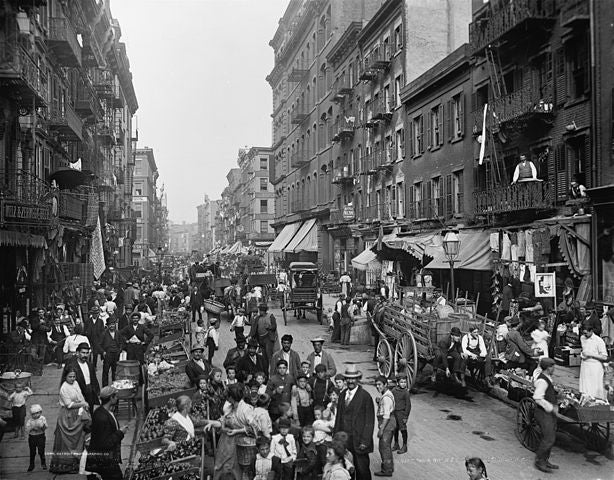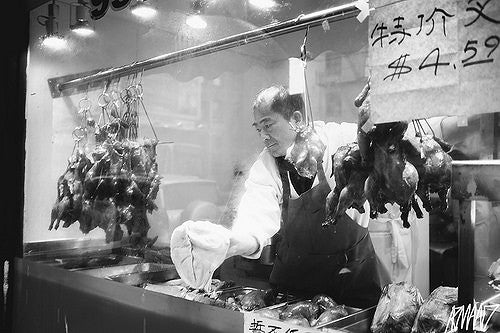This article was published in Scientific American’s former blog network and reflects the views of the author, not necessarily those of Scientific American
The description of America as a melting pot is somewhat apt in terms of cultural assimilation but undeniable regarding culinary contributions. Since the 1850s, migrants from northern Europe, the Mediterranean, Asia, Latin America, and the Caribbean have left an indelible mark on the nation’s cuisine. As butchers, bakers, greengrocers, and restaurateurs, they’ve dominated the feeding occupations throughout the years. Chair of the nutrition and food studies program at New York University, Krishnendu Ray, explores the impact migrants have had on American taste and food culture in his most recent book, The Ethnic Restaurateur.
According to Ray, not all contributions are given equal value. Instead, there is a clear hierarchy of taste that is complicated in terms of ethnicity and race. Cuisines from France and Japan currently rank in the upper echelon. Since they are considered haute cuisine, he notes these foods would never be described as “ethnic.” Instead, that term is reserved for lower tiered foods from countries like Mexico, Vietnam, and India. Categorizing a cuisine as ethnic comes with a taint of inferiority and subordination. The power differential manifests in price--consumers may be willing to pay more for high status foods but expect ethnic foods to be cheap.
“We are no longer allowed to publicly say some cultures are inferior but you can say it through price,” notes Ray. “What are you willing to pay? It is that subconscious value system to pay $100 for French or Japanese food but not Mexican.”
On supporting science journalism
If you're enjoying this article, consider supporting our award-winning journalism by subscribing. By purchasing a subscription you are helping to ensure the future of impactful stories about the discoveries and ideas shaping our world today.
A cuisine’s reputation and rank can change over time. The identity of Italian food has morphed over the years. Founding father Thomas Jefferson had an interest in northern Italian cuisine, even serving macaroni and cheese at a state dinner in 1802. The song “Yankee Doodle” demonstrates the perceived poshness of pasta during that period--the lyric “stuck a feather in his cap and called it macaroni” is essentially the British taunting Americans for their lack of sophistication.

A bustling food scene in Little Italy at the beginning of the twentieth century on Mulberry Street in New York. Via Wikimedia Commons.
“At the time, there were no Italian immigrants in the United States,” explains Ray. When they do arrive in the 1880s, he adds, it is not the northern Italians; instead, it is their poor southern compatriots who fit into a category of “white but not quite.” A moral panic ensued--by the 1920s, nutritionists and public health advocates cautioned against the use of olive oil and foods that were garlicky or spicy, instead favoring butter and other foods more typically associated with northern Europe. Italian food was even frowned upon by James Beard. During a visit to France and Italy in 1955, he wrote, "My opinion of Italian cookery is not too high...It seems to me that even the food on the wagonlit restaurant [in France] was better than all of the food of Italy."
Italian food was able to move beyond its red checkered past, eventually being elevated to white tablecloths. With the upward mobility of Italian Americans came an appreciation of their cuisine. This emerged throughout the 1980s and 1990s, evidenced by an interest in understanding differences in Italian wine varietals, shapes of pasta, and the accompanying willingness to pay for all its internal distinctions.

Chinese food has mainly been synonymous with cheap food in the United States, existing on a lower rung of the hierarchy of taste. Photo by Armand via Flickr.
That same effort and attention to nuance hasn’t been put into many Asian or Latin American cuisines yet. Ray believes that may be changing--if China continues on its upward economic trajectory and immigration to America decelerates, he anticipates its diverse fare may finally get its due. “Culture follows capital,” Ray tells me, pointing to the transformation of the perception of Japanese food within the United States that followed Japan’s economic growth.
In addition to changing status of cuisines, there are other shifts in the perception of migrant contributions to American culinary culture. Initially used in the 1950s, the term “ethnic” feels outdated to Ray, like describing someone as “colored.” He adds that it is also limiting, “Ethnic is this holding pen that flattens all these things--you can put curry, Vietnamese, Indian, and Mexican in it together as if it makes sense.”
Overall, Ray sees this as a fascinating time for food in the United States. He believes it parallels what has already happened with music--a need to be omnivorous in taste, with the ability to display eclecticism and appreciation of forms both high and low brow. He says, “There is this flattening between what is considered elite culture and poor people’s culture. We completely destroyed that schema in music and now we are doing it with food. This is what makes American food so interesting and exciting right now.”